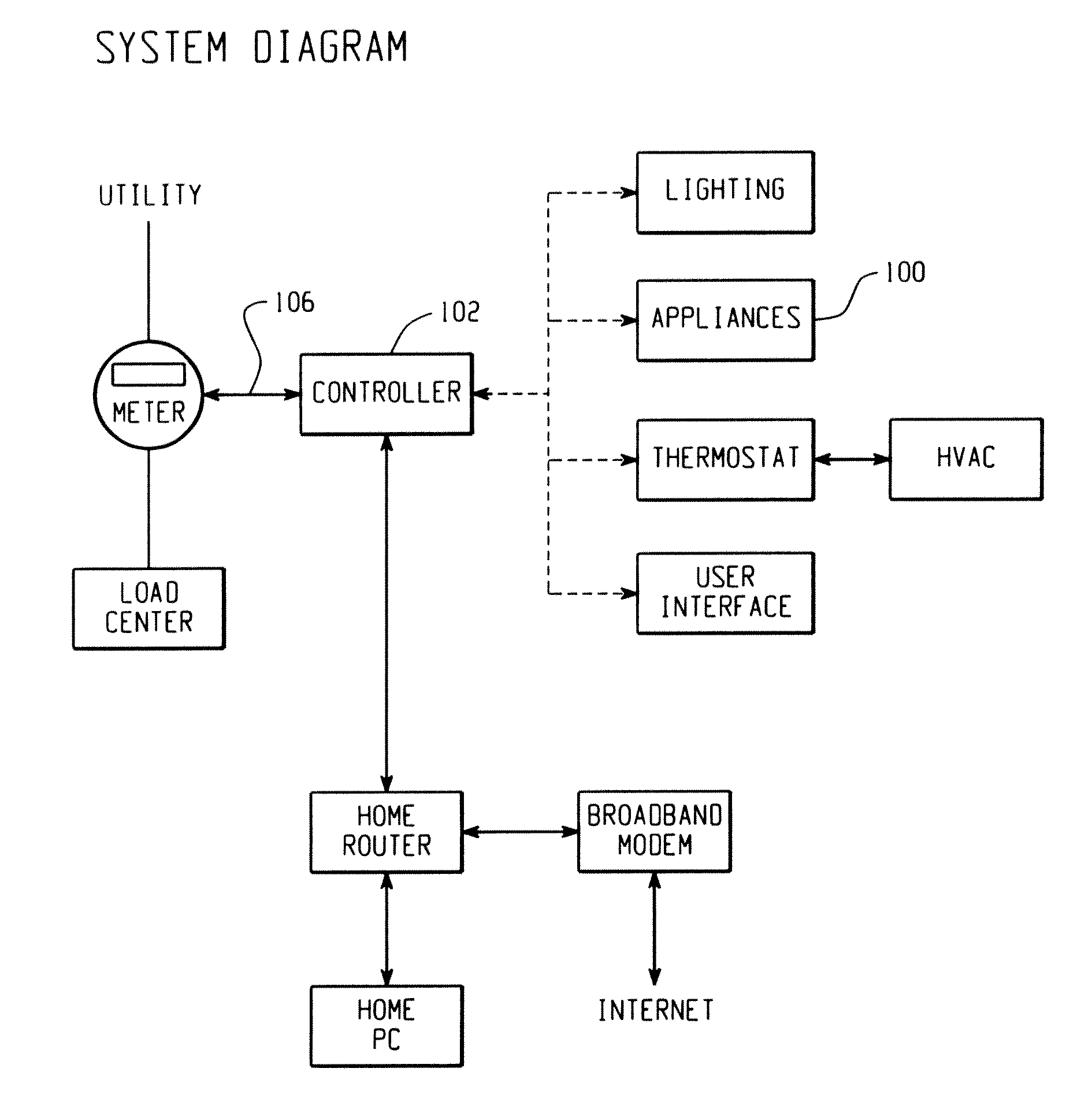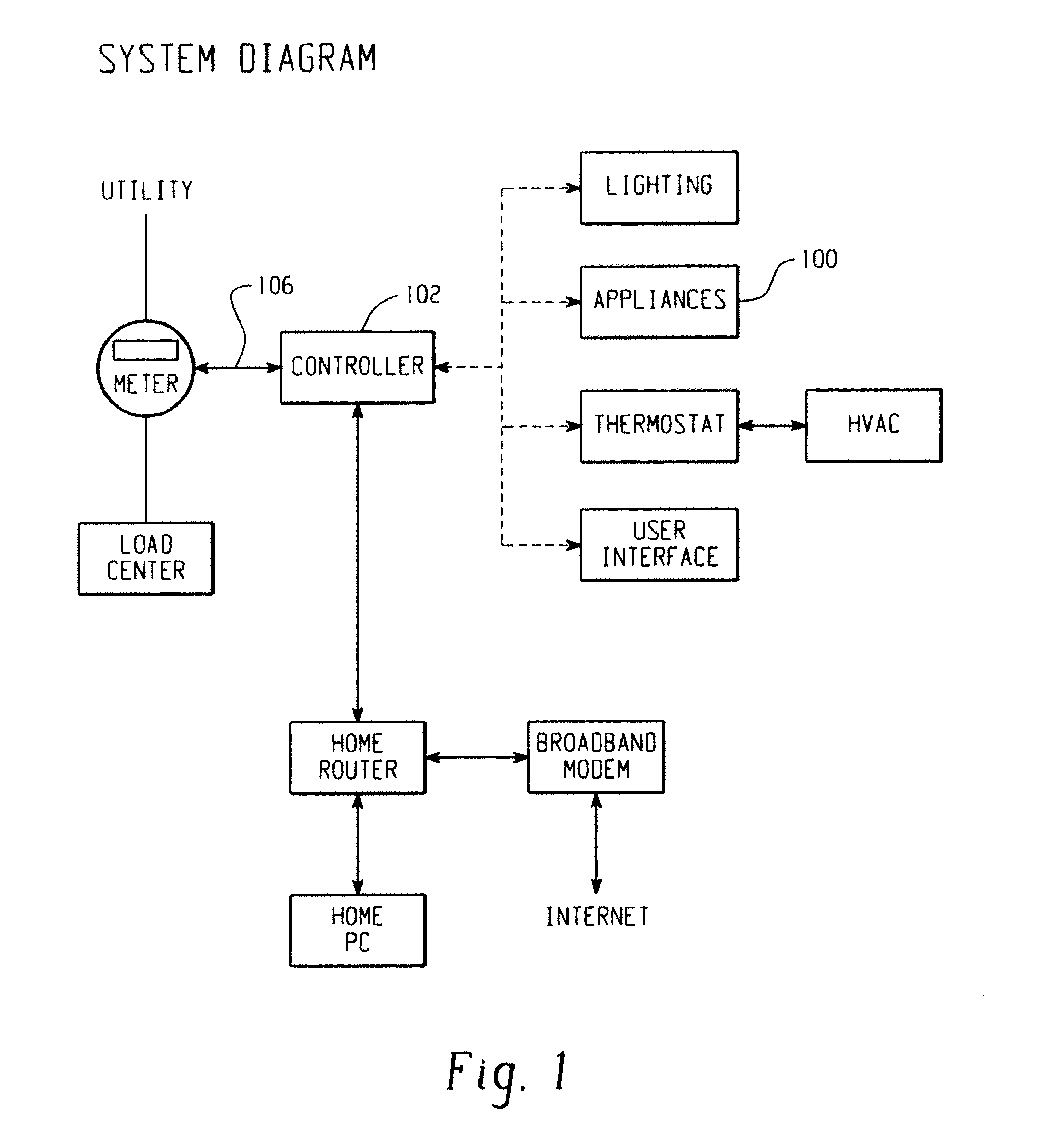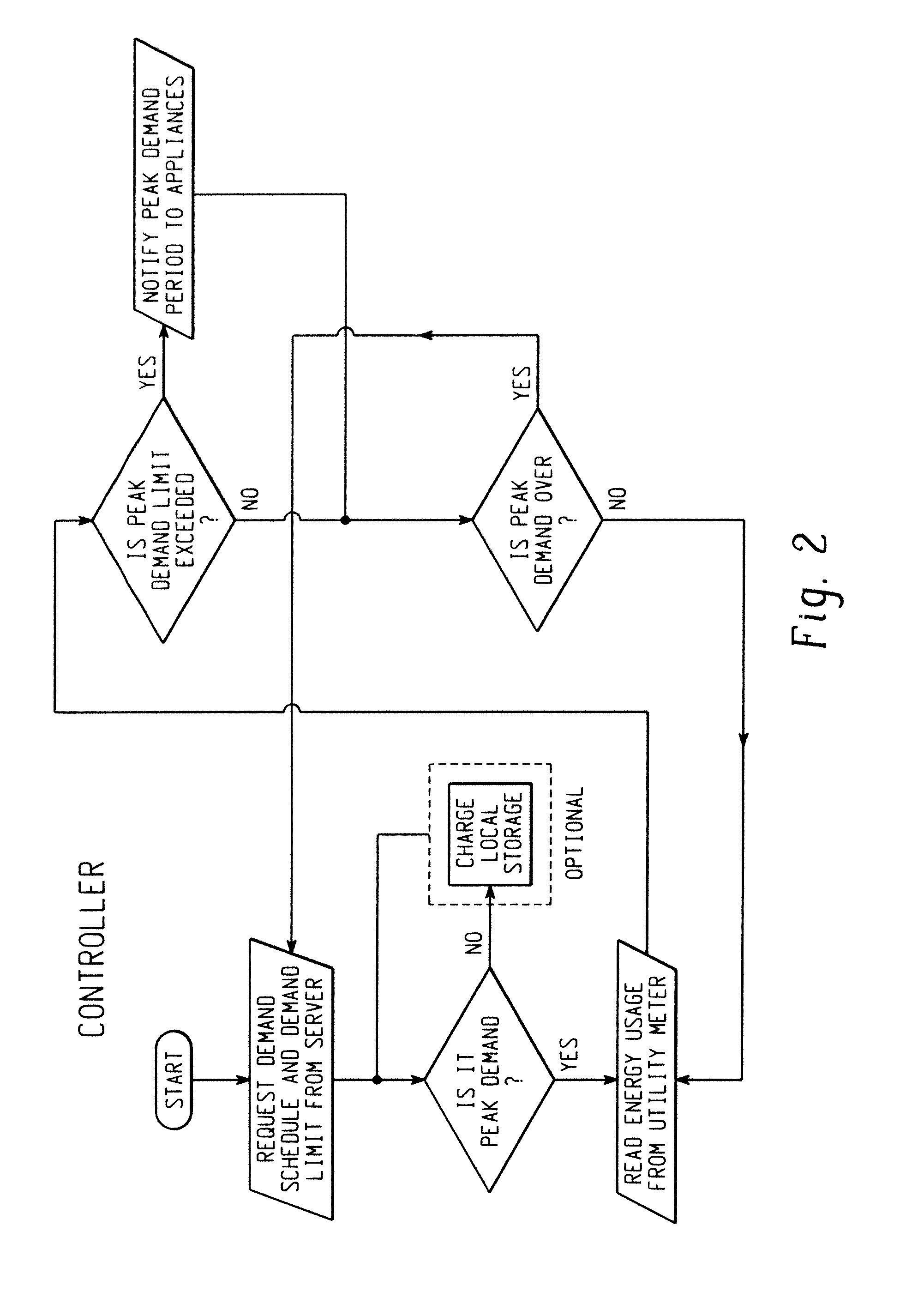System for reduced peak power consumption by a cooking appliance
a technology for cooking appliances and peak power consumption, applied in baking ovens, lighting and heating appliances, furnaces, etc., can solve the problems of reducing the peak and average power consumed by the appliance, no active control, and high cost for utility companies, so as to reduce the peak power consumption of the cooking applian
- Summary
- Abstract
- Description
- Claims
- Application Information
AI Technical Summary
Benefits of technology
Problems solved by technology
Method used
Image
Examples
Embodiment Construction
[0022]An exemplary embodiment of an energy management system for household appliances is illustrated in FIG. 1. An electronic controller is provided for communicating with a utility meter and reducing power consumption in response to a peak demand period. A utility meter can also provide the controller the occurrence of peak demand and demand limit. The demand limit can also be set by the home owner. Additionally, the homeowner can choose to force various modes in the appliance control based on the rate the utility is charging at different times of the day. The controller will look at the energy consumption currently used by the home via the utility meter and see if the home is exceeding the demand limit read from the server. If the demand limit is exceeded, the controller will notify the intelligent appliances, lighting and thermostat / HVAC (FIG. 2).
[0023]The interaction between controller and appliances can occur in various ways. For example, in one scenario during a peak demand pe...
PUM
 Login to View More
Login to View More Abstract
Description
Claims
Application Information
 Login to View More
Login to View More - R&D
- Intellectual Property
- Life Sciences
- Materials
- Tech Scout
- Unparalleled Data Quality
- Higher Quality Content
- 60% Fewer Hallucinations
Browse by: Latest US Patents, China's latest patents, Technical Efficacy Thesaurus, Application Domain, Technology Topic, Popular Technical Reports.
© 2025 PatSnap. All rights reserved.Legal|Privacy policy|Modern Slavery Act Transparency Statement|Sitemap|About US| Contact US: help@patsnap.com



